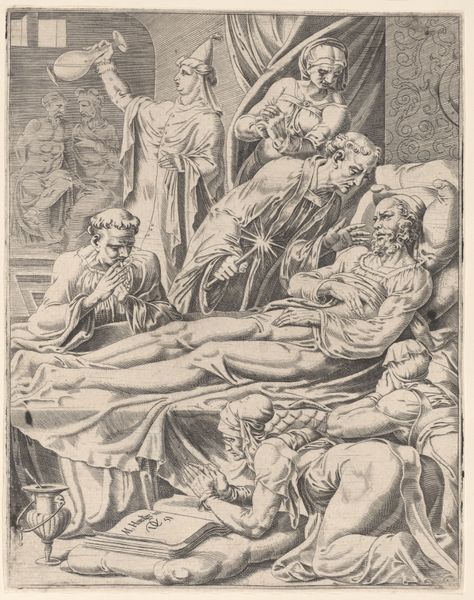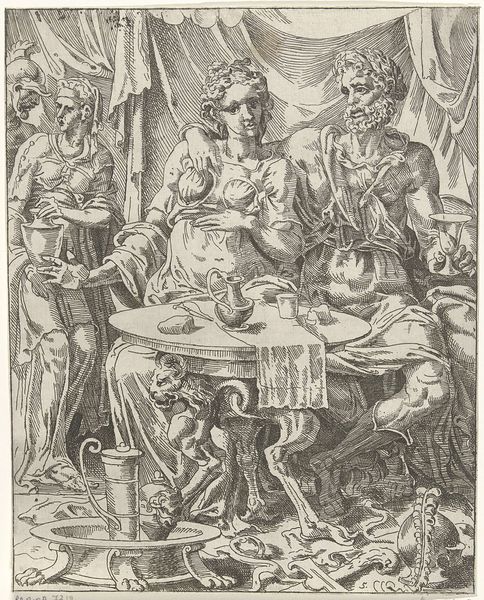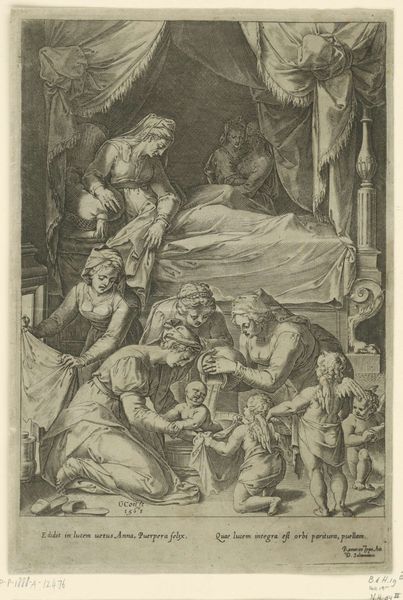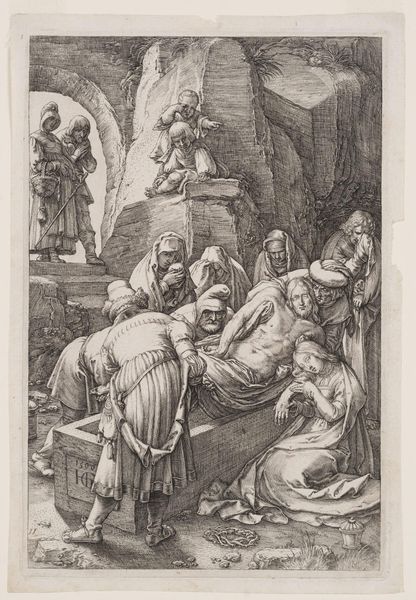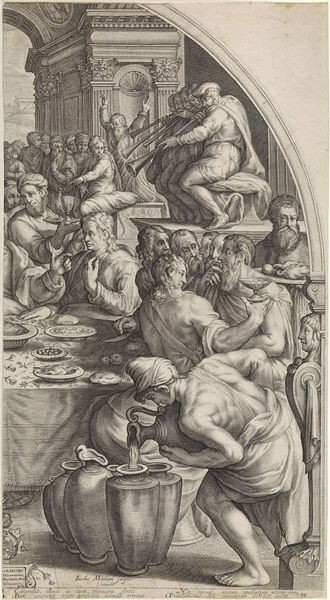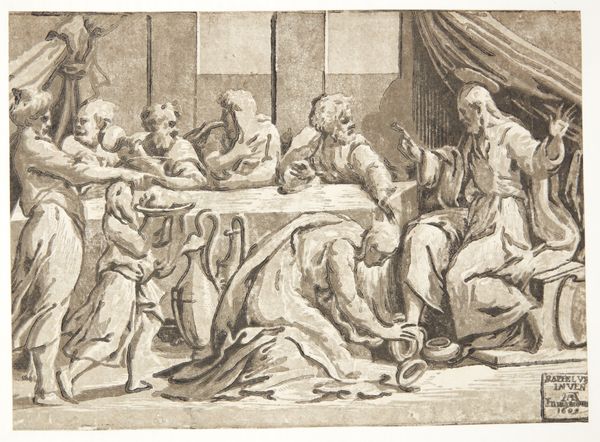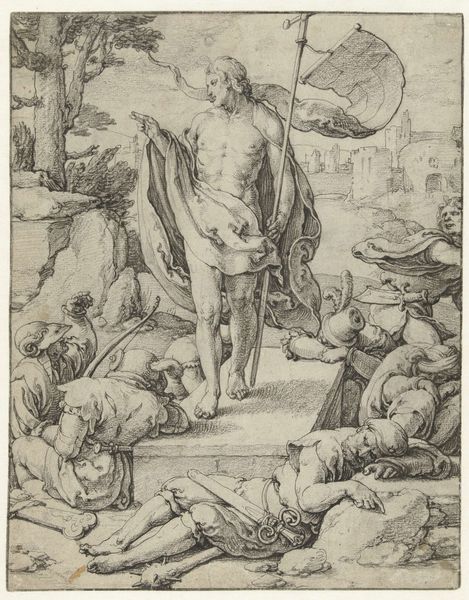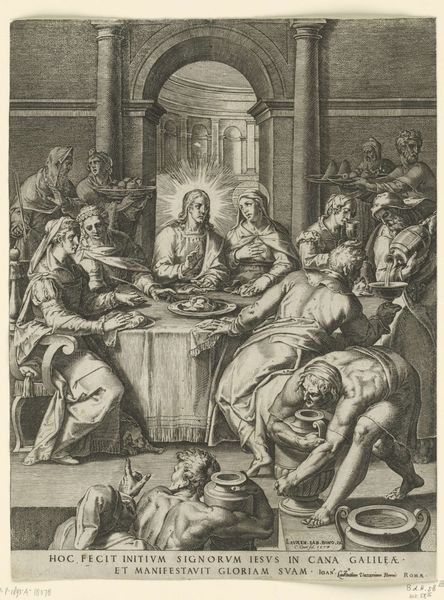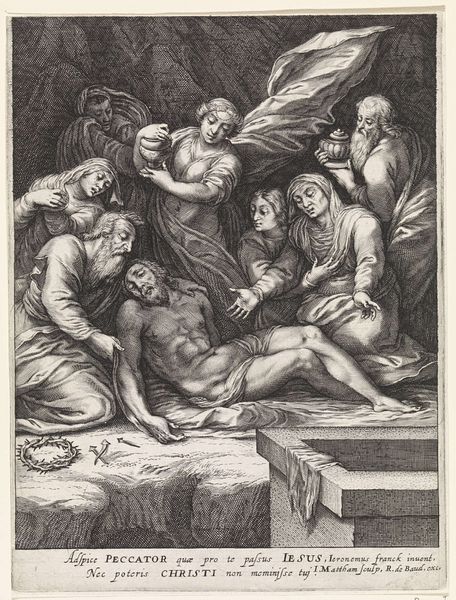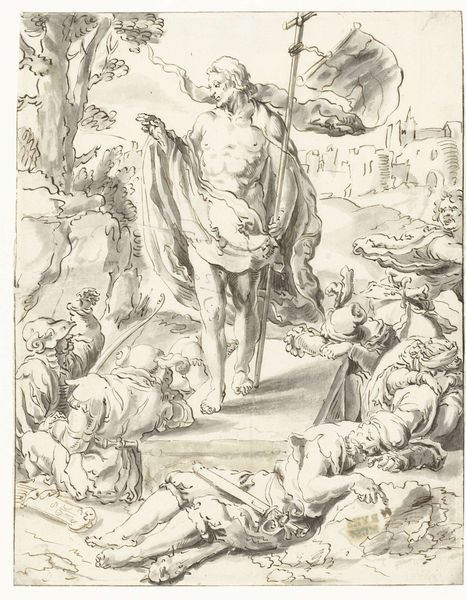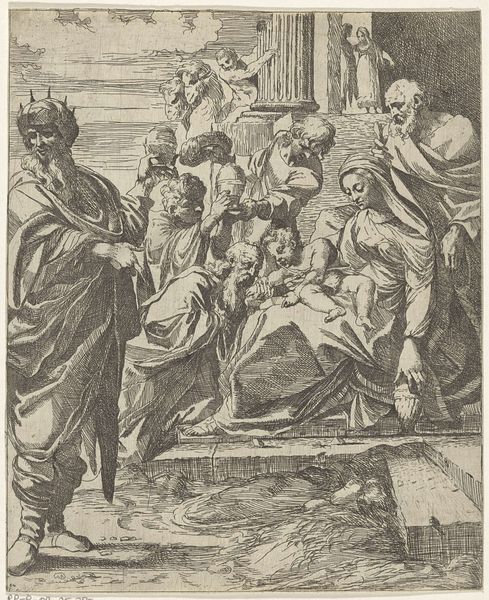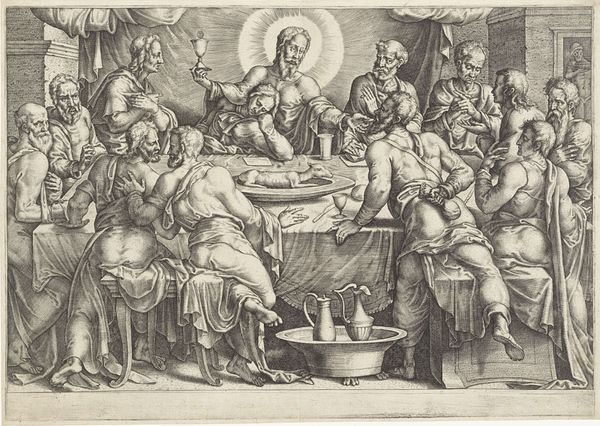
drawing, print, ink, pen, engraving
#
drawing
#
narrative-art
# print
#
pen illustration
#
pen sketch
#
figuration
#
ink
#
pen
#
genre-painting
#
history-painting
#
northern-renaissance
#
engraving
Dimensions: height 242 mm, width 195 mm
Copyright: Rijks Museum: Open Domain
Curator: This is Dirck Volckertsz Coornhert’s engraving, “Lazarus bedelt aan de feestdis van de rijke man,” made in 1551. Editor: My first impression is stark, the detailed lines creating a dramatic contrast. The upper scene looks so full of pomp, while below, there's just Lazarus, wasted away. The composition makes their separation literal; a social chasm realized on the picture plane. Curator: It's a very pointed commentary on wealth disparity, which aligns with Coornhert’s reformist views during the Renaissance. Lazarus, representing the destitute, is positioned at the periphery, literally beneath the opulent feast of the rich man. His skeletal physique isn't just physical; it's a symbol of systemic neglect. We have to read this in light of the religious tensions of the time as well. Editor: Right. Look at how meticulously the engraver rendered the musculature of Lazarus versus the soft, draped garments of the figures dining. Coornhert utilizes the full potential of line and hatching, creating depth and shadow that accentuate the gauntness. The formal device almost amplifies the narrative tension. Curator: Exactly, this isn’t just observation; it's active critique. The dogs attending to Lazarus while the wealthy man remains indifferent reinforces a theological and moral inversion of values. What does it say when animals show more compassion than people? Editor: The use of light is powerful. It almost carves Lazarus from darkness, while the banquet is more uniformly lit, which strangely diminishes their presence despite their busyness and finery. And it's just etching that has the effect—the manipulation of line alone generates a profoundly emotive scene. It also reflects a key Mannerist aesthetic—to present an elaborate artificial scene as true emotion and a narrative worthy of empathy. Curator: These dichotomies are deliberate, acting as an indictment of societal values. We have to read that within the context of the Reformation’s questioning of established hierarchies. There's real political and social weight communicated through the figures. Editor: Well, analyzing it in these ways truly adds layers to appreciating it; I was captivated by its technical prowess, the graphic, dynamic play, but there's clearly so much more when considering the message it sought to send. Curator: Yes, it brings home the profound relevance art had, and has, in reflecting upon justice and challenging complacency.
Comments
No comments
Be the first to comment and join the conversation on the ultimate creative platform.
